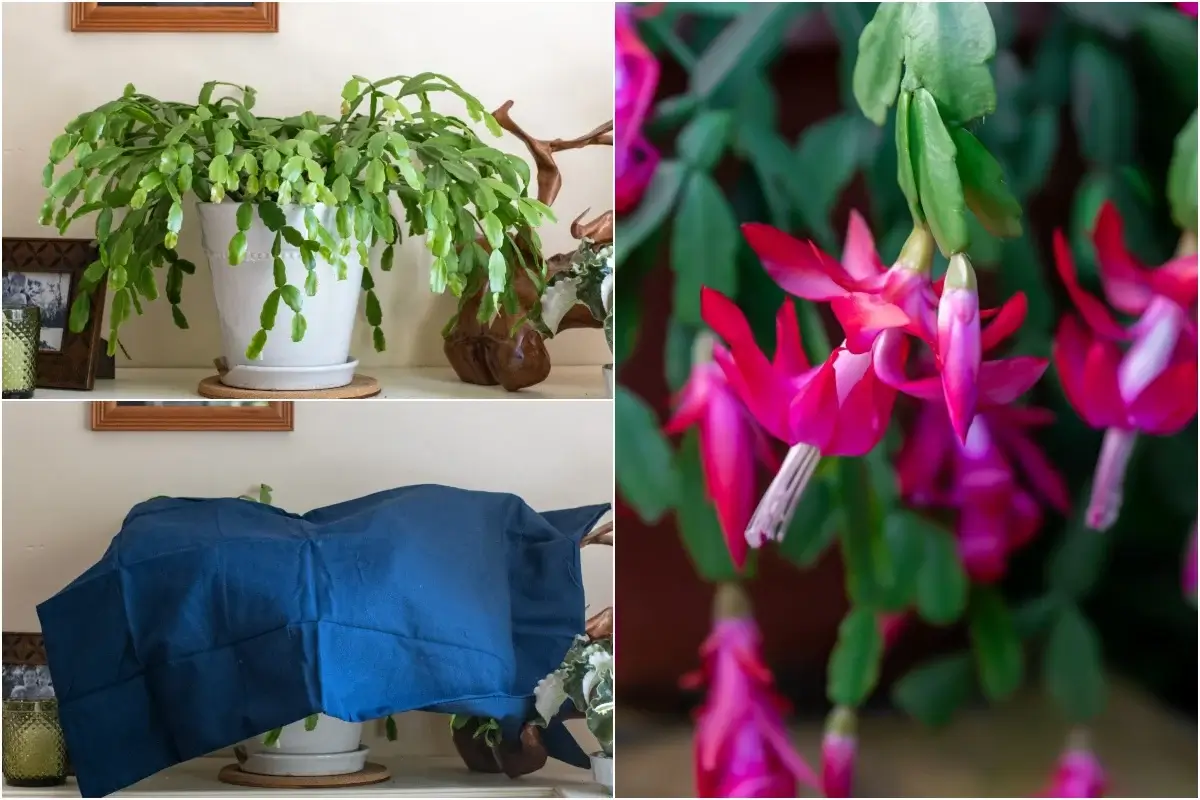If you want your Christmas cactus to burst into color during the holidays, October is when the magic begins. The steps you take now will determine whether you enjoy a lush display or a plain green plant by Christmas.
Let’s break down what you need to do — and clear up a few myths along the way.
The Truth About Your “Christmas” Cactus
Here’s the surprise: most people don’t actually own a Christmas cactus.
The plant sitting on your windowsill is probably a Thanksgiving cactus.
Both belong to the Schlumbergera family, but they bloom at different times:
- Christmas cactus (Schlumbergera x buckleyi): Has soft, rounded edges on each leaf segment.
- Thanksgiving cactus (Schlumbergera truncata): Has sharper, more pointed edges.
- Easter cactus (Rhipsalidopsis gaertneri): Leaf segments are rounder and less jagged.
Identifying which type you have is important because the blooming schedule depends on it. Even if yours is a Thanksgiving cactus, the same techniques can help you get blooms during the holiday season.
Why Your Christmas Cactus Might Not Bloom
You may have heard stories from people who say their cactus blooms every year without any special care. That’s not luck — it’s environment.
Schlumbergera species are short-day bloomers, meaning they start setting buds when the days grow shorter, nights get longer, and temperatures drop. The plants sense these changes and respond by producing buds.
Those “lucky” cactus owners likely have the perfect combination of light, temperature, and darkness without realizing it. You can recreate those same conditions — intentionally.
October: The Critical Month
It takes about eight weeks for a Christmas cactus to develop buds. So, if you want blooms in December, you must start the process now.
Your goal this month is to gently stress the plant and create the right conditions for bud formation.
Step 1: Stress Your Plant (Just a Little)
Plants switch into blooming mode when they sense stress — it’s their way of ensuring survival. To encourage your cactus to flower:
- Water less. As growth slows in fall, your cactus needs less water. Let the top inch of soil dry before watering again.
- Keep it snug. Don’t repot this time of year. A rootbound plant is more likely to bloom than one with too much space.
Avoid overwatering — excess moisture at this stage can lead to root rot and fewer flowers.
Step 2: Cool Nights, Comfortable Days
Cooler temperatures are one of the biggest bloom triggers.
Try to keep your cactus in a room that drops to 50–55°F (10–13°C) at night.
If your home stays warm, move the plant to a cooler spot — perhaps a basement, garage, or unused room. Just make sure it doesn’t sit directly in front of an open window where it could get too cold or drafty.
Step 3: Create Long Nights and Short Days
Shorter days and longer nights mimic the natural environment that signals your cactus to bloom.
Here’s how to help that process along:
- Around 4 or 5 p.m., cover your cactus with a dark pillowcase, box, or lightproof cloth.
- Uncover it again in the morning so it gets some indirect daylight.
Consistency matters most — keep this up for several weeks. This darkness triggers the plant’s internal “bloom clock.”
Step 4: Keep the Environment Stable
Try not to move your cactus around too much during this period. Once buds begin forming, even small changes — like temperature shifts or drafts — can cause them to drop.
Also, avoid strong light sources or heating vents nearby. A steady, cool, dim environment will give you the best results.
Step 5: Be Patient and Gentle
In late November, buds should begin to appear along the leaf joints. Once they do, you can gradually return the plant to its usual bright spot and resume regular watering.
Continue caring for it gently — no major changes until after the blooming season ends.
Common Mistakes to Avoid
- Too much water: The top of the soil should dry before watering again.
- Too much light at night: Even a nearby lamp can disrupt the dark period your plant needs.
- Repotting too late: Repot only in spring, after blooming is done.
- Sudden drafts: Keep away from heaters, fans, and open windows.
After the Blooms Fade
Once the flowers are done, give your cactus a short rest. Water sparingly and keep it in indirect light. When spring returns, feed it lightly and watch new growth emerge — this sets you up for another round of blooms next year.
Key Takeaways
To get your Christmas cactus to bloom beautifully:
- Start the blooming process in October.
- Reduce watering and keep the plant slightly rootbound.
- Provide cool nights (50–55°F) and long dark periods daily.
- Stay consistent for about eight weeks.
- Once buds appear, move the cactus back to a bright spot and enjoy the show.
Final Thoughts
Getting your Christmas cactus to bloom right on time isn’t luck — it’s planning.
With the right mix of darkness, cooler air, and patience, you can enjoy a burst of bright color during the holidays. Start in October, follow these simple steps, and your cactus will reward you with stunning blooms come December.
Ready to see your Christmas cactus thrive this winter? Start preparing it today and watch your holiday display come alive with color!
